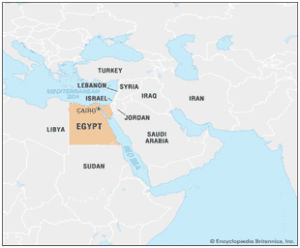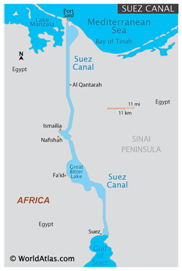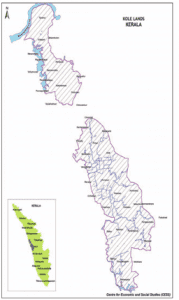INDIAN POLITY AND GOVERNANCE
1. WHAT IS ‘NIKAH HALALA’?
TAGS: PRELIMS PERSPECTIVE-GS-II-POLITY AND GOVERNANCE
THE CONTEXT: The Supreme Court said recently that it will set up a five-judge Constitution Bench to hear pleas challenging the constitutional validity of polygamy and nikah halala practice among Muslims.
THE EXPLANATION:
About Nikah halala:
- The term “Nikah” and “Halala” both are Arabic terms.
- “Nikah” means Marriage and “Halala” means to make something halal or permissible.
- The expression “Nikah Halala” literally means a marriage to make something halal or permissible.
- As per Muslim Law, a man cannot remarry his wife after he divorced her, unless the wife is married to another man and gets divorced from that man (second husband) or after the death of the second husband.
- Thus, the process of making the woman permissible for her first husband by giving her marriage to a third person with a pre-condition is known as Nikah Halala also known as Tahleel marriage.
- In this process, the third person consummates the marriage with the object to make the woman permissible for her first husband.
- Does the Quran permit this?There is no sanction in the holy Quran for such marriages.
Legality of Nikah halala in India:
- The Muslim Women (Protection of Rights on Marriage) Act, 2019 passed after the invalidation of triple talaq by the Supreme Court, is silent on nikah halala.
- The Act made instant triple talaq a criminal offence but steered clear of halala which takes place as a consequence of triple talaq.
2. WHAT IS A CHARGE SHEET?
TAGS: PRELIMS PERSPECTIVE-GS-II-POLITY AND GOVERNANCE
THE CONTEXT: The Supreme Court recently held the state is not obliged to provide the public free access to chargesheets by uploading them on police or government websites.
THE EXPLANATION:
What is a Chargesheet?
- According to Section 173 of Code of Criminal Procedure (CrPC), a charge sheet is a report generated by police officers after investigating a case.
- It contains all the stringent records right from the commencement of investigation procedure of lodging an FIR to till the completion of investigation and preparation of final report.
- It contains the names of the people brought in the custody, the charges they are brought in for and the identity of the accusers.
- Once the charge sheet has been submitted to a court of law, prosecution proceedings against the accused begin.
- Time limit for filing a Charge Sheet:
- It is to be filed within 60 days from the date of arrest of the accused in cases triable by lower courts and 90 days in cases triable by Court of Sessions.
- If the charge sheet is not filed within the prescribed time mentioned above, the accused has a right to default bail.
- A charge sheet is distinct from the First Information Report (FIR).
What is the First Information Report (FIR)?
- It is a written document prepared by a Police officer based on information given by an aggrieved person or any other person either in writing or made orally about the commission of a Cognizable Offence.
- Investigation is started only after filing of the FIR.
- Who can file an FIR? Anyone can file a FIR, whether it is the victim, victim’s family or friends, or any witness to a crime.
An FIR can only be lodged in case of cognizable offences.
What is a Cognizable Offence?
- It is one in which the police may arrest a person without warrant.
- The police are authorized to start investigation into a cognizable case on their own and do not require any orders from the court to do so.
INTERNATIONAL RELATIONS
3. EGYPTIAN PRESIDENT INDIA’S CHIEF GUEST FOR REPUBLIC DAY 2023
TAGS PRELIMS PERSPECTIVE- GS-II-INTERNATIONAL RELATIONS
THE CONTEXT: Egyptian President Abdel Fattah el-Sisi will be the first chief guest from his country at India’s Republic Day celebrations. This makes him only the fifth leader from the West Asian and Arab world to be the chief guest.
THE EXPLANATION:
- Location: Egypt is a transcontinental country situated in northeastern Africa and the Sinai Peninsula in Western Asia (Middle East).
- Capital: Cairo
Boundaries:
- The country borders the Mediterranean Sea to the north and the Gulf of Suez and the Red Sea to the east.

- It is bordered by Libya in the west, the Palestinian territory (Gaza Strip) and Israel in the northeast, and Sudan in the south.
- It shares maritime borders with Cyprus, Turkey and Greece in the Mediterranean Sea, and with Jordan and Saudi Arabia in the Red Sea.
- Independence: Modern Egypt became independent in 1922.
- Population: With 12 million inhabitants (2021), Egypt is the most populous country in the Arab world.
- Language: Spoken language is Modern Standard Arabic; the colloquial language is the Egyptian-Arabic dialect (Masri).
- Islam is the dominant religion in Egypt with an estimated 85-90% of the population is Sunni Muslim.
- Major rivers: The famous River Nile is the only river that flows in Egypt throughout the year. Around 98% of the country’s population resides in the Nile River Valley.
Suez Canal:
- It is a 30 km (120 miles)-long artificial sea-level waterway located in Egypt.
- It connects the Mediterranean Sea with the Gulf of Suez, a northern branch of the Red Sea.
- It provides the shortest maritime route between Europe and the lands lying around the Indian and western Pacific oceans.
- It is one of the world’s most heavily used shipping lanes.
What is Exercise Cyclone-I?
- It is the first ever joint exercise between the special forces of the Indian Army and the Egyptian Army.
- Location: Jaisalmer in Rajasthan
ENVIRONMENT, ECOLOGY AND CLIMATE CHANGE
4. DECLINE IN NUMBER OF BIRDS IN KOLE WETLANDS
TAGS: PRELIMS PERSPECTIVE- GS-III- ENVIRONMENT
THE CONTEXT: Kole wetlands are located in Kerala. The Asian Water Bird Census recently reported that the number of birds in the wetland has reduced significantly. The number of water birds in the wetland has decreased from 15,959 in 2022 to 9,904. This is huge and the survey accuses unscientific construction in the region of the decline.
THE EXPLANATION:
What does the census say?
- The 2023 census was the 23rd AWC. Kole wetlands are of major concern due to the huge water bird population decline. The population decline was mainly due to habitat loss in the region. This occurs because of unscientific construction and waste dumping.
Rare birds in the Wetland
- In the 2023 census, the ornithologists spotted some rare birds. And therefore are more concerned about the expropriation of their home. Some of the rare birds spotted in the region are Amur Falcon, Wood Sandpiper, and Cattle Egret. Rare migratory birds were also spotted in the region such as Painted Storks, Whiskered Tern, Garganey, and Ibis.
About Asian Water Bird Census
- The census identifies and counts water birds and predominantly focuses on the declining population of the birds in wetlands. It is a part of the International Waterbird Census. These censuses are conducted by Wetland International. The census is conducted in different parts of the world such as Asia, Africa, the Caribbean, and the Neotropics. Neotropics includes South America and Central America.
Asian Water Bird Census in India
- In India, the census was first conducted in 1987. The Bombay Natural History Society assists Wetlands International in conducting the survey in the country.
Significance
- The survey aids to get an outlook on the bird population. Has the bird population declined? Are more birds becoming endangered? Causes of bird population decline. Also, it helps in better implementation of the Convention on Biological Diversity and Convention on Migratory Species
5. ODISHA’S STRATEGY TO MITIGATE HUMAN-ELEPHANT CONFLICT
TAGS: GS-III- ENVIRONMENT & ECOLOGY
THE CONTEXT: The Forest Department of the Odisha recently submitted a Ten Pillar Strategy to mitigate Man-Elephant conflict in the state. There are more than 2000 elephants in the state of Odisha spread across the Bhitarkanika National Park, Similipal Tiger Reserve, DebrigarhSancturay, and Satkosia Tiger Reserve.
THE EXPLANATION:
- Today elephants are facing serious threats due to poaching, poisoning, electrocution, and road and train kill. Seldom have they indulged in human conflict due to loss of habitat. To bring in a solution and put an end to the human-elephant conflict, the Odisha Government has brought in a ten-point strategy.
Strategy
Zone-based approach to be adopted and there are three separate strategies for the following:
- Protection
- Prosecution
- Enforcement
- Strategy to improve elephant corridor
- Strategy to replenish elephant habitats
- People’s participation in spreading awareness
- Habitat management that will consider increasing the forest productivity
- Planting elephant food plants, bamboo plants
- Replenish water sources
- Solar fencing under Jana SurakyaGajaRakhya Scheme
- Control and prevention of forest fire
What is Zone based Approach?
- The approach was adopted from the state of Karnataka. Under the approach, the elephant habitats are to be divided into four broad zones. They are as follows:
- Zone 1: Elephant Conservation Zone
- Zone 2: Elephant-Human Coexistence Zone
- Zone 3: Conflict Mitigation Zone
- Zone 4: Elephant Removal Zone
Connect the Dots:
- Project Re-Hab

